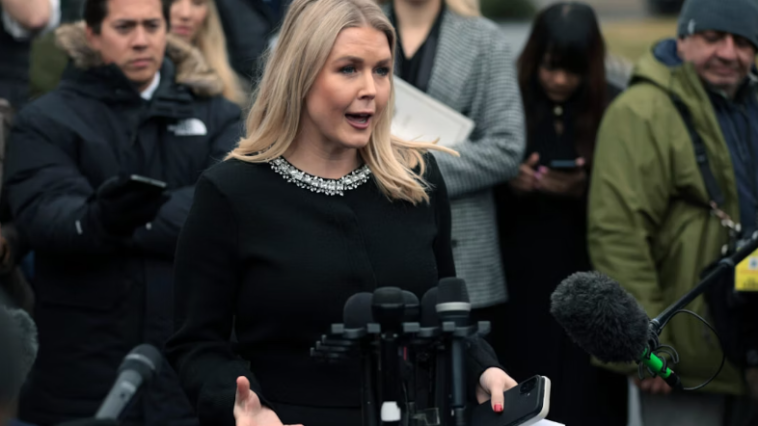White House Press Secretary Karoline Leavitt has outlined the Trump administration’s ambitious tax reform agenda, emphasizing a focus on substantial relief for middle-class Americans. Following a meeting between President Donald Trump and Republican lawmakers, Leavitt detailed several key priorities aimed at reducing the tax burden on working families and promoting economic growth.
Key Tax Reform Priorities:
- Elimination of Taxes on Tips and Overtime Pay: The administration proposes removing federal taxes on gratuities and overtime earnings, allowing workers to retain more of their income.
- No Tax on Social Security Benefits for Seniors: To support retirees, the plan includes eliminating taxes on Social Security income, thereby increasing the disposable income of senior citizens.
- Renewal and Expansion of 2017 Middle-Class Tax Cuts: Building upon the Tax Cuts and Jobs Act of 2017, the administration seeks to extend and enhance tax reductions for middle-income families.
- Adjustment of the State and Local Tax (SALT) Deduction Cap: The proposal aims to revisit the SALT deduction limits to provide additional relief to taxpayers in high-tax states.
- Elimination of Tax Breaks for Billionaire Sports Team Owners: In a move to address perceived inequities, the administration plans to remove specific tax advantages currently benefiting wealthy sports franchise owners.
- Closure of the Carried Interest Loophole: Targeting private equity and hedge fund profits, the plan includes measures to tax carried interest as ordinary income, thereby closing a loophole that has allowed certain investors to pay lower tax rates.
- Tax Incentives for American-Made Products: To bolster domestic manufacturing, the administration proposes tax cuts for products produced within the United States, encouraging businesses to onshore production.
Leavitt emphasized the administration’s commitment to enacting what she described as “the largest tax cut in history for middle-class working Americans,” highlighting the president’s dedication to collaborating with Congress to achieve these objectives.
The meeting at the White House, which included House Speaker Mike Johnson and other Republican leaders, focused on formulating a comprehensive plan for tax cuts and spending. While initial goals aimed for passage by the end of April, ongoing discussions suggest that lawmakers are considering short-term solutions and phased approaches to implement the proposed tax reforms effectively.
As the administration and Congress work together, the proposed tax reforms are expected to undergo further refinement to address fiscal considerations and garner the necessary legislative support.


